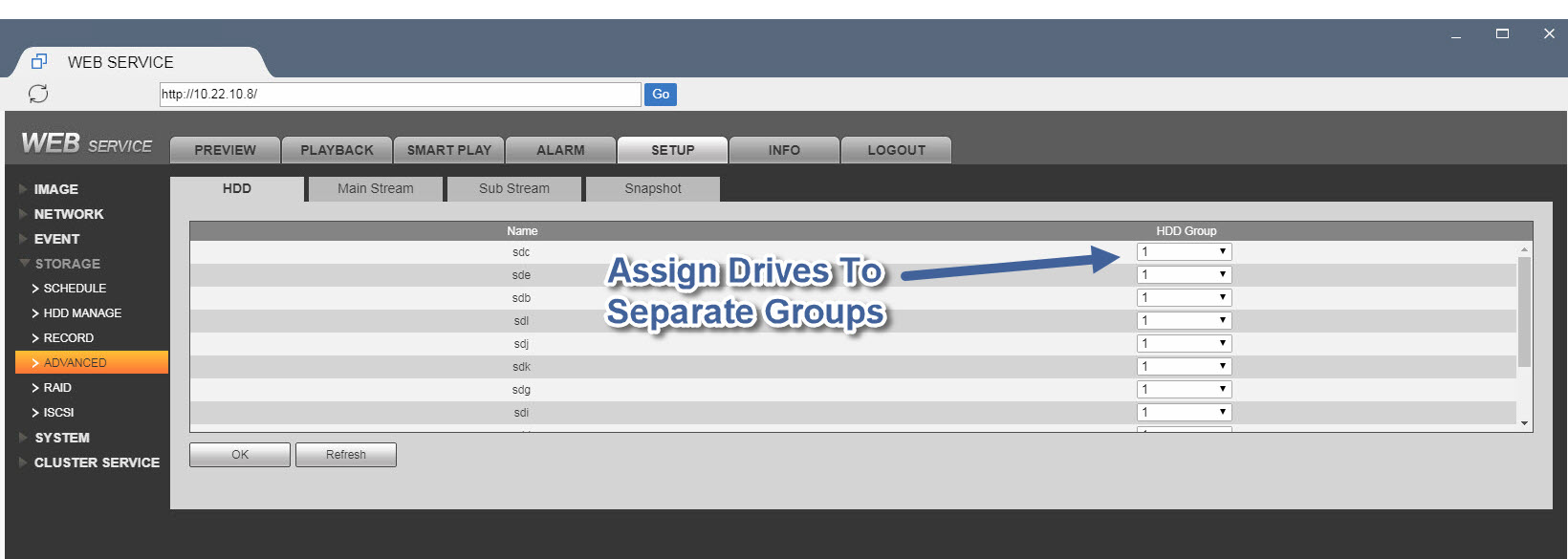
If you have a security camera system consisting of a large number of camera, it is common to forget to optimize the storage space inside the DVR or NVR inside that system. A hard drive has a certain amount of cache (usually 64MB in WD Purples that we use) that can properly accept incoming data and write that data to the platters inside. Exceeding the cache threshold will cause data loss, which in a security camera system manifests as lost video frames. These lost video frames are commonly referred to as Frame Skipping.
In high definition surveillance systems consisting 8 cameras or more, it is common to experience frame skipping when video is being recorded continuously from all the cameras simultaneously. The problem is especially pronounced when using a large number of 2K or 4K security cameras which are bandwidth hungry.
To mitigate frame skipping on your IP camera system, it is important to:
- Select a system with multiple hard drives in an NVR or DVR recorder
- Assign 2-3 drives to a group depending on the number of hard drives you have
- Assign the cameras to each hard drive group so that the hard drive cache is not exceeded
Step 1) Choosing the correct storage amount
When shopping for a NVR system or DVR system that has more than 8 cameras it is important to make sure that you buy multiple hard drives inside the recorder. If you plan to record continuously, that means each camera will be sending video to a hard drive every second simultaneously. You need to make sure you don't have more than ten 4K cameras going to one hard drive or hard drive group.
Step 2) Assign hard drive to groups in your DVR or NVR
You can login to the web interface of your recorder and navigate to the Setup > Storage > Advanced menu to assign 2-3 drives to a group.

Step 3) Assign cameras to HDD groups
The final step is to assign the cameras to separate HDD groups. The picture below shows all of the 32 cameras assigned to the same HDD Group. You don't want to have that. Using the drop down menu, split the cameras so that they are recording to different HDD groups.

Video - how to create hard drive groups
If you have purchased an NVR from CCTV Camera World in 2020 or later then you will want to follow the video below. In the video tutorial we show how to perform the steps outlined above using the GUI interface of the DVR or NVR. The recorder featured in the video below is our 32 channel NVR that can accommodate up to eight 10TB NVR hard drives. We assign two hard drives to a group, and then assign 8 video channels to each group in sequential order.
There are several benefits to using hard drive groups inside surveillance systems, especially in 4K security camera systems that have very high resolution cameras that use a lot of bandwidth. Some of these benefits include:
- Reduction in chances of frame skipping
- Reduction in video loss from all cameras should one hard drive failure

